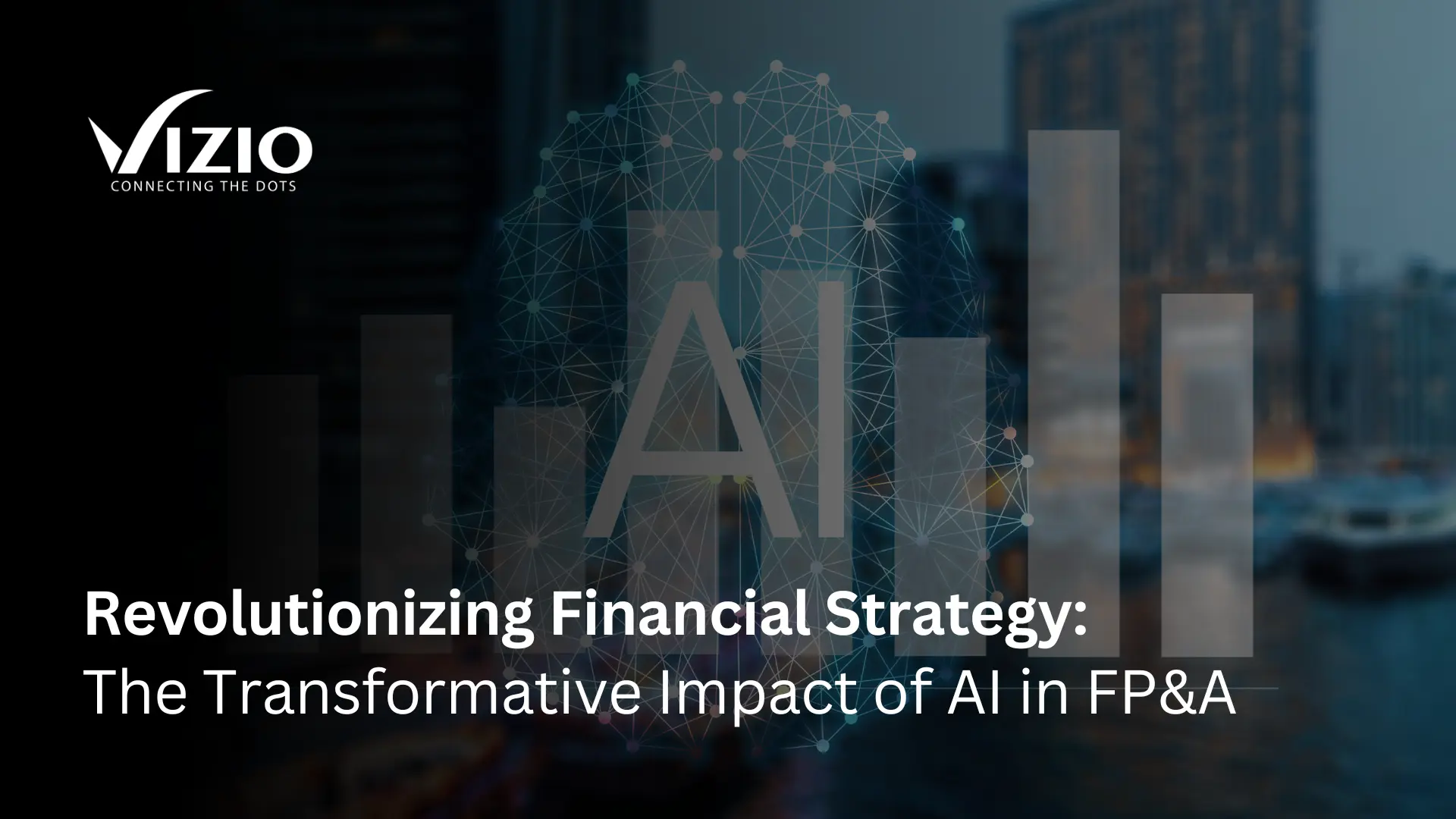In the dynamic landscape of modern finance, organizations grapple with the daunting task of managing a huge volume of data while striving to meet escalating reporting demands. Tackling these challenges head-on, many finance entities are increasingly turning to the transformative capabilities of Artificial Intelligence (AI) and Machine Learning (ML) to elevate their Financial Planning and Analysis (FP&A) processes. This article delves into the diverse applications of AI in FP&A, dispelling common misconceptions and shedding light on its potential to enhance forecasting accuracy, unveil optimization opportunities, and provide real-time insights for proactive decision-making.
1. AI’s Overhaul of Forecasting in FP&A
Forecasting is a critical aspect of FP&A, guiding business strategy, decision-making, and risk management. Traditionally, forecasting involved manual extrapolation of historical data, often limited by human biases and simplistic projections. However, with the advent of AI, businesses can now analyze vast datasets at unprecedented speeds, incorporating countless variables previously deemed insignificant or too complex to process. Machine Learning algorithms enable predictive models to self-improve over time, capturing nuances and adjusting to new trends, market shifts, and economic indicators. This results in more accurate and adaptive forecasts that align with the ever-changing business environment.
1.1 Forecasting Applications in FP&A
Forecasting is utilized in various aspects of FP&A, including budgeting, resource allocation, risk management, and decision-making. Let’s explore each of these applications in more detail:
1.1.1 Budgeting
Budgeting involves creating plans for how much money a company will spend and earn in the future. By leveraging AI-powered forecasting tools, FP&A teams can generate accurate and reliable budgets based on historical data, external factors, and scenario analysis. This enables organizations to allocate resources effectively and make informed financial decisions.
1.1.2 Resource Allocation
AI forecasting models assist in determining how to allocate resources, such as people, money, and equipment. By analyzing historical data and considering various influencing factors, FP&A teams can optimize resource allocation strategies, ensuring efficient utilization and cost-effectiveness.
1.1.3 Risk Management
Forecasting plays a crucial role in identifying and assessing risks to the business. AI-powered predictive models can analyze diverse data sources and provide insights into potential risks, enabling FP&A teams to develop risk mitigation plans and make informed decisions to safeguard the organization’s financial well-being.
1.1.4 Decision-making
AI-enhanced forecasting supports decision-making across various areas, including pricing, marketing, and product development. By providing accurate and timely predictions, FP&A teams can make data-driven decisions that optimize business performance and drive growth.
1.2 Implementing AI in Forecasting
Implementing AI in forecasting requires a structured approach. Here are the key steps involved in the process:
1.2.1 Data Collection and Objectives
To begin, gather function-specific historical data and define clear forecasting objectives. For example, sales figures for the sales department or campaign ROIs for marketing. Clear objectives help in selecting appropriate AI/ML tools and models.
1.2.2 Choose and Apply a Model
Depending on the nature of the data, choose the appropriate AI/ML model. Time series models are suited for trend-based forecasting, causal models for assessing influencing factors, and Machine Learning models for advanced pattern recognition.
1.2.3 Technological Solutions
Cloud platforms like Google Cloud, Azure, and Amazon SageMaker offer robust tools for enhancing forecasting. For example, Google Cloud’s AutoML Tables facilitates building and deploying Machine Learning models, while Azure Machine Learning offers a comprehensive suite for constructing predictive models. Amazon SageMaker streamlines the process of building, training, and deploying Machine Learning models at scale.
1.2.4 Integration
Integrate the forecasting model with existing systems to ensure consistent data flow and real-time analytics. This integration enables FP&A teams to access accurate and up-to-date information for decision-making.
1.2.5 Integrate Broader Business Insights
Include information from related departments and external factors, such as macroeconomic shifts, to fine-tune forecasting accuracy. Collaborating with other functions fosters alignment and cross-functional collaboration.
1.2.6 Review and Refinement
Continuously compare predicted figures with actual results to understand deviations. Refine models accordingly, adjust strategies, and share forecast insights with related functions and the central FP&A team.
2. Harnessing Digital Twins in Financial Scenarios
Digital twins, virtual replicas of processes, products, or services, are gaining prominence in various sectors, including FP&A. Combined with AI, digital twins provide a powerful tool for simulating financial scenarios and enhancing risk management. By visualizing potential outcomes of diverse financial decisions, organizations can strategize in a sandbox environment and make informed decisions to optimize financial performance.
2.1 Applications of Digital Twins in FP&A
Let’s explore some key applications of digital twins in FP&A:
2.1.1 Risk Management in Banking
Banks can utilize digital twins to augment their risk management strategies. By creating digital representations of trading operations and loan portfolios, banks can simulate the impacts of market events such as interest rate changes or shifts in currency exchange rates. This enables risk management teams to make calculated capital allocation and risk mitigation decisions.
2.1.2 Optimization in Manufacturing
Manufacturing firms can integrate digital twins to optimize their production processes. By replicating factories and production lines in a virtual space, companies can explore different production scenarios and assess the impact of changes in product mix or demand patterns. This digital insight aids production teams in making informed decisions about production schedules and resource allocation.
2.1.3 Inventory Management in Retail
Retailers can develop virtual models of distribution centers and warehouses to enhance inventory management. By simulating different inventory policies and assessing the impacts of alterations in reorder points or lead times, retailers can strike a balance between stock availability and efficient resource use. This improves operational efficiency and ensures optimized inventory levels.
3. Overcoming Challenges and Embracing the Power of AI in FP&A
While AI presents immense opportunities for FP&A, there are challenges to overcome. Let’s discuss some common concerns and considerations:
3.1 Quality and Integration of Data
Consistent and integrated data is crucial for accurate AI modeling. Inconsistent or fragmented data can lead to misleading insights. FP&A teams should ensure data quality and implement robust integration processes to ensure seamless data flow.0\
3.2 Skill Gaps and Resource Allocation
Implementing AI in FP&A may require upskilling existing staff or hiring AI specialists. FP&A teams should assess skill gaps and allocate resources accordingly to ensure successful AI integration.
3.3 Complexity and Explainability
Advanced AI models can be complex, leading to concerns about their explainability. FP&A teams should choose models that are interpretable and incorporate explainability features to address audit and regulatory requirements.
3.4 Cost Implications
Implementing AI in FP&A entails costs associated with technology, training, and maintenance. FP&A teams should carefully evaluate the return on investment and consider the long-term benefits of AI implementation.
3.5 Regulatory and Ethical Considerations
With the increasing scrutiny of financial forecasting tools, it is crucial to adhere to regulatory and compliance requirements. FP&A teams should be mindful of potential biases in AI forecasts and ensure ethical use of AI technologies.
3.6 Change Management and Scalability
Implementing AI in FP&A requires effective change management to drive adoption and overcome resistance. Scalability considerations should also be taken into account to ensure that AI solutions can accommodate future growth and evolving business needs.
Conclusion
AI has the potential to revolutionize FP&A by enhancing forecasting accuracy, uncovering optimization opportunities, and providing real-time insights for proactive action. Despite common misconceptions, AI implementation in FP&A is achievable with the right approach and considerations. By harnessing the power of AI, finance teams can make data-driven decisions, optimize financial performance, and gain a competitive advantage in today’s dynamic business landscape. Embracing AI in FP&A is not just a technological evolution but a strategic revolution that paves the way for precision, foresight, and agility in financial planning and analysis.

